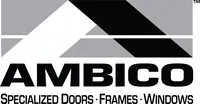
Mitigating Radio-Frequency Interference: Shielding Door and Frame Assemblies
Radio-frequency energy is in almost everything we come in contact with, from microwaves, Wi-Fi, electricity, phones, Bluetooth devices, and more. But the radio frequency that has made our lives so efficient can also disrupt the function of other objects emitting radio-frequency or electro-magnetic frequency. The disruption of radio frequency devices caused by other electro-magnetic frequencies is called radio frequency interferences (RFI).
Radio frequency interference can be involuntary emissions but it can also be caused by deliberate manipulation. An example of involuntary emission of RFI are MRI machines, Telecommunication towers, and the natural electro-magnetic pull of the earth; on the contrary, RFI can also be deliberately manipulated to steal information, interrupt signals, or corrupt databases. These are a few among many instances where radio-frequency shielding comes into play.

Radio Frequency shielding, also known as RFS, is a technique used to reduce the amount of radio frequency or electro-magnetic energy transmitted into a space. The technique is commonly used in door designs to keep out a range of frequencies from disrupting function or protecting information.
What is it used for?
Radio Frequency Shielding doors are commonly found in hospital settings. Various critical care and diagnosis equipment such as ventilators, external pacemakers, and MRI and CT scanners are sensitive to radio frequency interferences but also emit disruptive radio frequency. For this reason, for the longest time, hospital visitors were asked to turn off their phones when inside a hospital to prevent interference. Today both visitors and doctors can be found using phones, tablets, and computers at every station, thanks to effective RF shielded rooms and doors keeping radio and electro-magnetic frequency from entering or leaving a particular space.
In recent decades RFs doors have gained popularity in government buildings ever since information containment became digital. Government SCIF (Sensitive Compartmented Information Facilities) rooms with acoustic requirements now also can require radio-frequency shielding features to protect from cyber eavesdropping or file corruption.

How does Ambico do it?
Many factors must be considered in manufacturing and installing an RF door. Unlike most RFs products, RFS Doors are by their very nature more vulnerable to leaks and espionage as it is the very point of entry. This makes it especially vital that the RFs doors are specifically designed to tackle various factors simultaneously.
AMBICO measures the performance of the RF doors based on the frequency wavelength and decibels of the RFI attenuated. The radio frequency that needs to be attenuated will determine the specs of the RFS doors. Ambico perform tests for the worst-case measurement to ensure the product can protect against the energy level specified (dB) across the frequency range requirement (Hz), based on the client’s performance specification.
AMBICO RF doors achieve these performance standards because we:
- Ensure all cracks between the door and frame are properly sealed. Seal plays a critical role in RF Shielding; the seals are typically metal or electrically conductive fabric, allowing the current to transfer between the door and frame.
- Ensure frames are grounded via a cable and conductive bracket to ensure the energy transferring between the door and frame is effectively carried to the ground.
- Minimize the crack size. Low-frequency waves require larger cracks to pass through. Therefore the smaller the gap, the less energy will pass through the door.
- Pick the right material for use. Material with similar conductivity allows current to flow more freely; when current flow is interrupted between the boundaries of two materials, the door can emit some energy like an antenna.
These simple yet critical aspects ensure all our RFs assemblies are up to international standards. The IEEE testing procedures are used to determine the effectiveness of the shielding, which currently stands as the testing standard for all Radio Frequency shield products. Our IEEE tested, high performing expertly designed RF doors are an excellent option for medical, SCIFs, and others. Assemblies are provided with complete RF gasketing that is essential for product performance in the field.
Learn more about AMBICO’s Radio-Frequency Assemblies at https://www.ambico.com/radio-frequency-doors/



